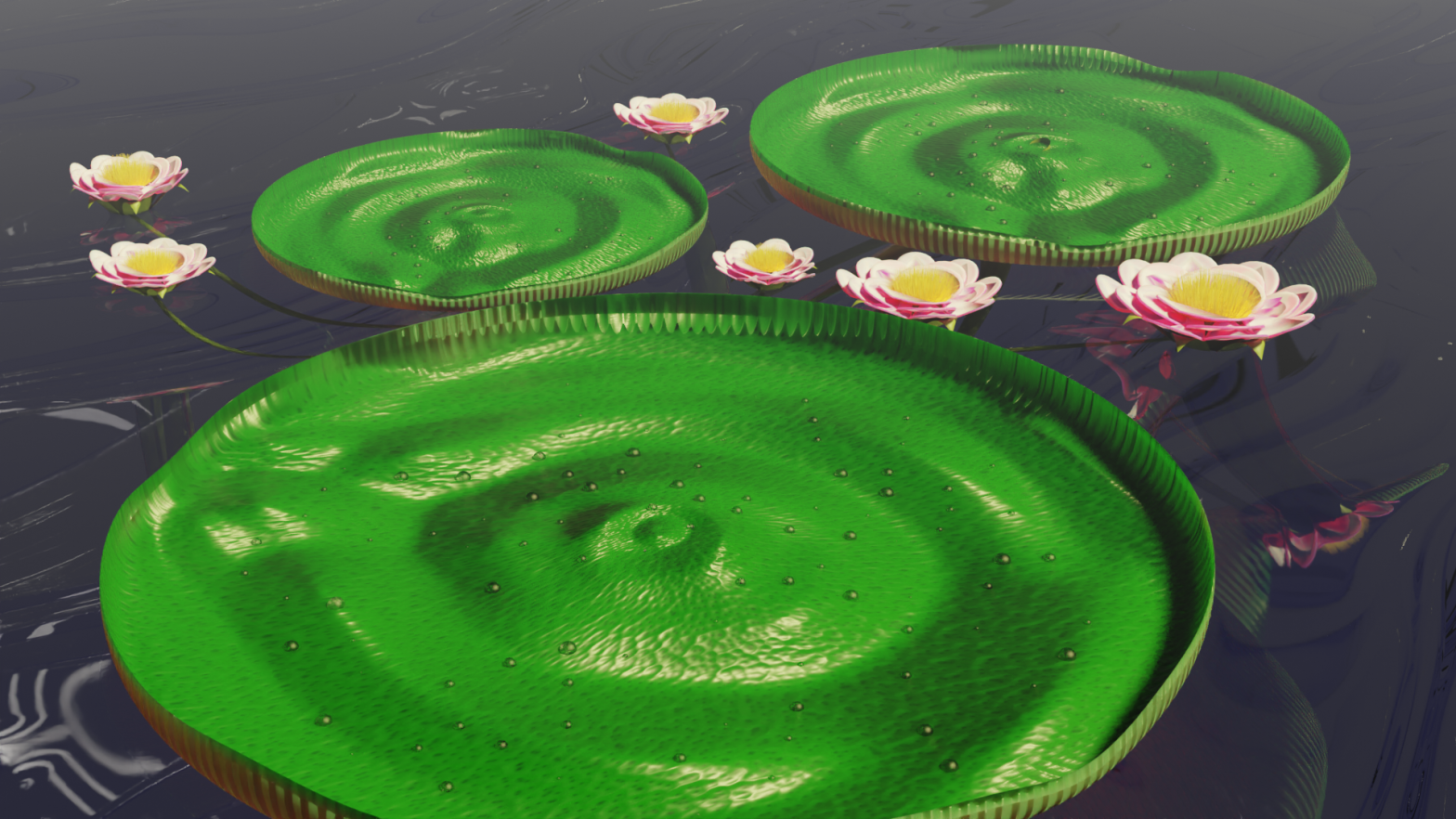So this was all afternoon yesterday.
For the sake of Strings/Fracture/Symmetry/Whatever-I’m-Calling-It, I needed some jungle life references; and I bumped into the one water lily big enough to support the weight of a small child, or two, without sinking. Apparently they trap enough air under the leaves to provide serious structural support. It was something I had to work with.
The in-game render is likely to begin at only 32 samples and be much smaller; given the current GPU cost crisis (between COVID-19, the inexplicable coin mining addiction, and simply a lack of planning on the part of manufacturers and shippers—and who could blame them?) I’m rendering on a GTX 1660 at best. I’ll be honest, it is a mean little card, but this took a bit more than 12 hours to complete at 1080p with 128 samples.
I’ll likely jump to maybe 128 to 512 samples for the final, after the geometry is all figured out. I also had to determine exactly where I was willing to stop with it—I used geometry nodes for the dew on the leaf, and for the stamen on the flower; I don’t do much with hair particles anymore other than, well, hair.
The leaves actually use two materials, but I applied vertex coloring and used the red channel to bleed one into the other, so it would be less abrupt. The leaf material is entirely procedural; I created a UV map which was ordered by radius along y, so I could make a Voronoi texture stretch out along it, which closely resembles what we get for the veination in leaves. Pipe it into a vector displacement or bump node, along with subsurface color, pick some dark greens and turn up the gloss, and you’ve got something pretty convincing. For the region beneath it I simply generated a spirogram with so many spires coming off of it, and applied it to the material displacement, so we get those neat air pockets.
The only thing I chose to skip on was the spines these plants have beneath them, to deter herbivorous fish. It was late, and I needed it to be done; and there was no guarantee anyone would ultimately notice. Maybe later on. There are a few minor issues in this model, which of course I only notice after spending all night rendering it… but they’re inconsequential in the long game and relatively easy to fix.

